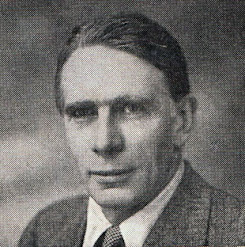Mystery novel tells readers more about Albert Campion
 |
| The Vintage edition of Flowers for the Judge |
The mysterious Campion is called in to help when an
old friend, Paul Brande, a nephew of the founder of the Barnabus publishing
company, is reported as missing by his wife, Gina. Paul has been absent from
home for three days, but as he and his wife led almost separate lives, no one
has found it at all remarkable up till then.
Campion is introduced to the other members of the
family involved in the publishing firm at a Sunday afternoon tea party at Gina’s
flat. During the tea party, another cousin, Mike, goes to the office to fetch a
file for the firm’s managing director from the strong room.
The next day, Paul Brande’s body is discovered lying in
full view in the strong room by staff at the Barnabus publishing company. The
police decide Mike must have seen the body when he went there on the Sunday
afternoon but chose to say nothing about it. They also discover from other
people that he was secretly in love with Gina, who is an attractive young American
woman. They arrest him and accuse him of murdering Paul.
A large part of the book shows the police establishing
a case against Mike and putting him on trial for murder, almost making it a
legal mystery.
In this 1936 novel, Margery describes the nosegay traditionally
carried into court by the judge. It is made up of fresh, scented flowers for
the judge to sniff to mitigate the unpleasant smells and unhygienic air of the
courtroom. It is the nosegay that gives the book its title.
 |
| Peter Davison as the bespectacled Campion in the BBC adaptation of Flowers for the Judge |
He is also told about the manuscript of a previously
unpublished play written by Restoration dramatist William Congreve, which is
owned by the firm. This was kept in the safe in the strong room and was about
to be put on display at an event by Paul Brande.
As the trial gets under way, Campion, and his
manservant, reformed criminal Magersfontein Lugg, have to work day and night to solve the
murder before Mike is sentenced and hanged. At one point, Campion’s own life is
threatened and he finds he must draw on all his resources and Lugg’s underworld
contacts to help him solve the case.
Many readers have said they liked seeing the
development of Albert Campion’s character by Margery Allingham during this
story, who the reader has previously been told little about by the author. I
found it to be a pacy whodunit that I enjoyed reading.
Flowers for the Judge was adapted for the BBC with Peter Davison as Campion and Brian Glover as Lugg and it was shown on television in two, hour-long episodes in 1990.
Buy Flowers for the Judge from or
.jpg)


